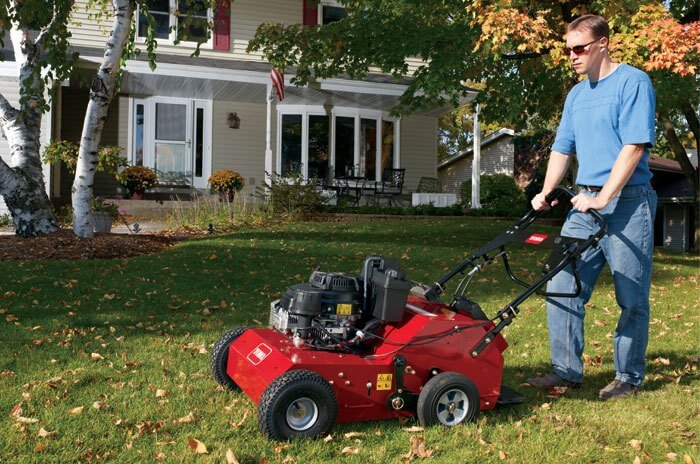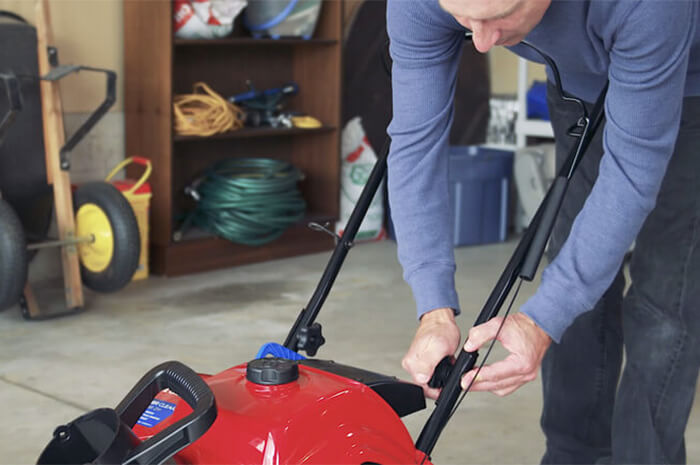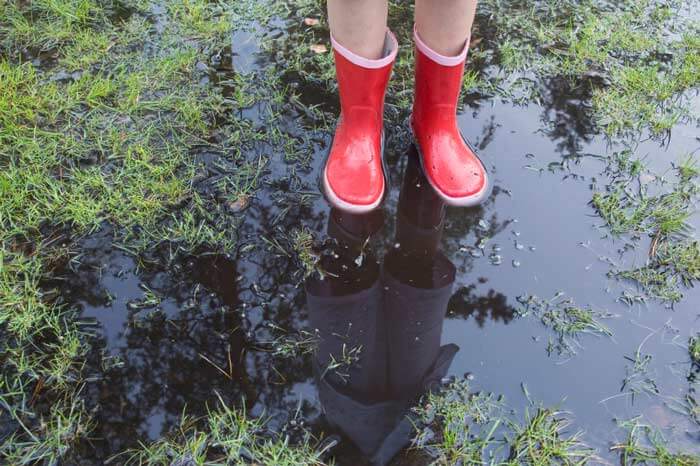
Let’s face it, when you live in the suburbs, a well-kept, healthy lawn is a must. It’s your front lawn that makes the first impression of your home, before anyone even steps foot into your house. So, if you’re wondering what steps to take for a healthy lawn, or even how to maintain a healthy lawn, there’s a healthy grass tip that many people tend to forget about: aeration.
What is Aeration?
Aeration, or aerification, is a method of perforating your lawn with small holes. It allows for more water and oxygen to reach the soil, along with the roots of your grass. Aeration can help address several lawn challenges, such as poor drainage or gas exchange, soil compaction, layering in the soil profile, heavy soil in the root zone, and thatch. Aerating your lawn is one of the best conditional processes you can do for your grass, and is an essential part of how to make your lawn look healthy again.
“From a grass health perspective, it’s probably the single most valuable thing you can do for a lawn along with mowing, watering and fertilizing,” says Ross Hawley, marketing manager for Toro. “Aerating leads to healthier, stronger lawns, which minimizes weeds and pest problems.”
How Often Should You Aerate to Keep Your Grass Healthy?
Your soil conditions, along with where you live, will determine how often you should aerate your lawn. According to Hawley, aeration is usually performed in the spring, when the grass is coming out of winter dormancy, or in the fall, after the stress of summer. Aeration is more effective when there are relatively high levels of moisture in the ground, since you can pull deeper cores with moist soil than you can with dry ground. It’s generally recommended that you water your lawn a day before aerating, and water it again once the job is done.
What Are My Options?
Taking note of how much aeration can promote healthy grass – not just for residential lawns, but also for sports fields and golf courses – more and more contractors are adding it to their list of services. However, with the right equipment, it’s easy to learn the aeration process yourself, completing the job on your own.
Aerators come in all sorts of different models, some of which are fairly similar to a lawn mower. Lawn-mower-like models should feel relatively familiar, with easy-to-use controls, allowing the average property owner to quickly gain a feel for the equipment. There’s no need for a special license or certification, but the operator should be sure to understand the equipment for safe and effective aeration.
Aerating equipment, although easy to learn to use, can be costly for the average homeowner – especially if only using it once a year. A basic, entry-level mechanically driven aerator still costs around $2,000, with higher-quality hydraulic aerators running between $3,000 and $5,000. Fortunately, aerators are available to rent from most equipment rental stores.
Should I Rent or Hire?
“Because aerators are pretty easy for a homeowner to handle, it can make a lot of sense for them to do their aeration themselves, and the easiest and most cost-effective way to do that is to rent equipment when you need it,” says Anna Foster, rental product marketing manager at Toro. “In fact, a great way to save is to get a pool together with your neighbors. Everyone can chip in on renting the aerator for a day, and it can just be passed along.”
“Aerating can be hard work, which is why many people choose to have a professional handle it,” Foster continues. “If you are going to tackle it by yourself, selecting the right aerator can help cut down on how labor-intensive the job is.” Foster encourages homeowners to look for brands they are familiar with when renting an aerator. “At Toro, we’ve adapted the same controls we have on our mowers to our aerators. This helps cut down on the learning curve on an unfamiliar piece of equipment.”
Whether choosing to rent or hire, aerating your lawn every year is a great idea. It’ll not only make your grass look better, but actually improve your lawn health – with more oxygen and nutrients introduced into your grass.
Now Go Make Your Lawn Healthier!
If you follow the advice above, you should find yourself with a healthier lawn. Just remember: lawns don’t change overnight. Be ready to roll up those sleeves and do the hard work.



